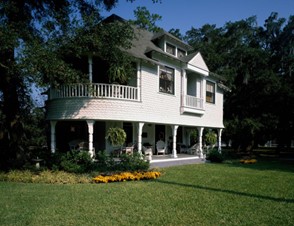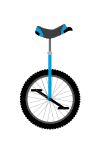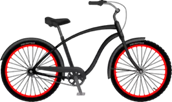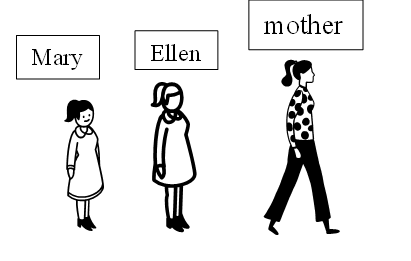Chapter 5: Comparisons
I. Introduction to Comparatives
We as humans have a tendency to compare things. Who is richer? What is bigger? What is the least expensive. It’s a helpful tool and one we often use. While some comparisons are better left unsaid, they are something that, rightly or wrongly, we often do. So, we need language tools to communicate our comparisons.
English language comparatives give us a chance to communicate the similarities and differences between things. Yet, when we look at differences, it doesn’t have to be a distinct black-and-white sort of comparison of exact opposites; instead, it can be more nuanced, looking at something in between.
In real life, things are rarely exact opposites or exactly the same, and we have an obligation to provide a more accurate, and sometimes more sensitive , picture of the realities of comparisons. Having a full toolbox of language tools to do this is important.
1.0 Structure
1.1 Adjectives
There are several ways to communicate comparisons.
On the one hand, we can compare things or people using adjectives. There are regular adjectives such as ‘the same’, ‘similar’, or ‘different’.
Then there are comparative adjectives, which have an ‘-er’ ending, to show that there is more of an attribute than the characteristic of something mentioned before.
We use superlative adjectives with ‘-est’ to show that something has more of a characteristic than all other things we are comparing. These adjectives imply that not every comparison is an exact opposite; rather, there are different levels of difference.
Example

For things that can’t be counted, like water, because they are not separate things, and for words that have three syllables, we use ‘more’ and ‘most’ in front of the word we are describing.
Example

water

more water

most water
1.2 Adverb ‘As’
On the other hand, we can also use the adverb ‘as’ to compare things. When we mention only one of the things being compared in the sentence, we use ‘as’ + adjective, but when the thing or person it is being compared to is mentioned in the same sentence, we use ‘as’ + adjective + another adverb ‘as’ + the thing/person being compared.
Examples
Gary is nearly as fast at calculating as Mary.
This car is not quite as expensive as the other car.
I am almost as tall as my brother.
Who is taller? Mary or her sister?

Mary is not as tall.
Mary is not as tall as her sister.
1.2.1 Add Adverbs for Nuance
There are also some adjectives or adverbs that make our comparisons even more exact or accurate. These include phrases such as ‘not quite as . . . as’, ‘almost as . . . as’, and ‘nearly as . . . as’.
Examples
Gary is nearly as fast at calculating as Mary.
This car is not quite as expensive as the other car.
I am almost as tall as my brother.
1.3 Adverb Clauses
Adverb clauses using Coordinating Conjunctions or Subordinating Conjunctions (either by themselves or paired) can also be used in comparisons. This is covered in the chapter on sentence structure and adverb clauses. Examples are given below to demonstrate this.
Examples
While John is tall, Mary is short. (subordinating conjunction for contrast)
John is tall, and Mary is tall. (coordinating conjunction for similarities)
Both John and Mary are tall. (paired coordinating conjunction for similarities)
Exercise: Comparatives in Context

Underline the comparative forms in the following paragraphs.
When I went back to visit the city I grew up in, I was surprised by the things that had changed and by the things that had not changed. First of all, I went to visit the house I grew up in. The new owner had made it bigger, and it looked newer because he had renovated it. The new owner must have seen me standing there looking at the house for a long time, so he came out to talk to me. I explained that it was the old house I used to live in, and, surprisingly, he invited me in to see the changes he had made.
Some things had not changed. The living room was in the same place as it had been, and it was just as cozy as it had been. Likewise, the kitchen was the same, except that it had new appliances—the stove and fridge were newer, but the cupboards were just as old as they had always been.
Some things had changed, however. The new owner had made some rooms bigger and added some new rooms to better accommodate guests. There was less space in the yard because of the added rooms. The whole house felt more spacious, and because he had added some new bigger windows, the rooms inside were brighter, and they felt less gloomy.
All in all, I think he made the new house better. But I missed the house I grew up in. To me, my old house had a greater connection to my childhood.
Answers show/hide
When I went back to visit the city I grew up in, I was surprised by the things that had changed and by the things that had not changed. First of all, I went to visit the house I grew up in. The new owner had made it bigger, and it looked newer because he had renovated it. The new owner must have seen me standing there looking at the house for a long time, so he came out to talk to me. I explained that it was the old house I used to live in, and, surprisingly, he invited me in to see the changes he had made.
Some things had not changed. The living room was in the same place as it had been, and it was just as cozy as it had been. Likewise, the kitchen was the same, except that it had new appliances—the stove and fridge were newer, but the cupboards were just as old as they had always been.
Somethings had changed, however. The new owner had made some rooms bigger and added some new rooms to better accommodate guests. There was less space in the yard because of the added rooms. The whole house felt more spacious, and because he had added some new bigger windows, the rooms inside were brighter, and they felt less gloomy.
All in all, I think he made the new house better. But I missed the house I grew up in. To me, my old house had a greater connection to my childhood.
2.0 Comparatives for Showing Similarities and Differences
English language comparatives give us a chance to communicate the similarities and differences between things. There are degrees of comparatives, just as there are degrees of modals; however, they are easier to use. A similarity is how two or more things are the same or close to being the same. Black and gray are similar to each other, and there are different degrees of grey. A difference is how things are not like each other or are even opposite to each other, like black and white are opposite to each other.
Examples
| Differences | Similarities |
|---|---|
|
|
Exercise: Comparatives in Context
In the paragraphs below, underline the comparative forms that show differences or similarities.
You can tell that Kenji and Daisuke are definitely brothers because they share many of the same traits; however, they are also different in many ways.
First of all, they look almost the same, but Daisuke is a little taller than Kenji. Daisuke has a slightly wider face than Kenji, but Kenji’s face is a little longer. Daisuke is the older brother, while Kenji is the younger brother. So, it is not surprising that Daisuke works harder and takes charge more than Kenji. Kenji is of course a little less serious than Daisuke.
Kenji likes to hang out with his friends more than Daisuke does. Kenzie has longer hair than Daisuke, and his clothes are a little more fashionable; however, Daisuke is just as friendly as Kenji. They both enjoy sports, but one likes football, while the other likes baseball. These are both team sports. When it comes to individual sports, Daisuke likes sports that require a high degree of discipline, like cross-country running. Kenji, however, likes sports that allow him to meet other people, so he likes golf.
Answers show/hide
You can tell that Kenji and Daisuke are definitely brothers because they share many of the same traits; however, they are also different in many ways.
First of all, they look almost the same, but Daisuke is a little taller than Kenji. Daisuke has a slightly wider face than Kenji, but Kenji’s face is a little longer. Daisuke is the older brother, while Kenji is the younger brother. So, it is not surprising that Daisuke works harder and takes charge more than Kenji. Kenji is of course a little less serious than Daisuke.
Kenji likes to hang out with his friends more than Daisuke does. Kenji has longer hair than Daisuke, and his clothes are a little more fashionable; however, Daisuke is just as friendly as Kenji. They both enjoy sports, but one likes football, while the other likes baseball. These are both team sports. When it comes to individual sports, Daisuke likes sports that require a higher degree of discipline, like cross-country running. Kenji, however, likes sports that allow him to meet more people, so he likes golf.


2.1 Things That Are Different
The suffixes ‘-er’ and ‘-est’ are used in connection with nouns, adjectives and adverbs.
Adjectives with ‘-er’ and ‘-est’ and also with ‘more’ and ‘less’ are often used to describe differences. They are not used to describe similarities.
Examples
Marta is better at math than Jorge.
Marta is the smartest in her class.
Jolanda is more intelligent than most people.
Adjectives with ‘-er’ and ‘-est’ are used with single-syllable adjectives and some two-syllable adjectives.
Adjectives with three syllables as well as some two-syllable adjectives use ‘more’ or ‘less’.
‘-er’ is used to describe something when only two things are being compared. In mathematical terms, it means A > B or A < B.
‘-est’ is used when comparing three or more things.
Examples
 Mary is shorter than Ellen. (Mary < Ellen)
Mary is shorter than Ellen. (Mary < Ellen)
Ellen is taller than Mary. (Ellen > Mary)
Their mother is the tallest. (Mother > Ellen and Mary)
2.2 Comparative and Superlative Adjectives
2.2.1 One-Syllable Adjectives
For one-syllable adjectives, we use the comparative suffix ‘-er’ and the superlative suffix the + ‘-est’. Note that the article ‘the’ is used with the superlative form because the possible selection is limited to only one thing, person, or animal.
Examples
- fast – faster – the fastest
- high – higher – the highest
- low – lower – the lowest
- soon – sooner – the soonest
- hard – harder – the hardest
- late – later – the latest
- deep – deeper – the deepest
- wide – wider – the widest
- young – younger – the youngest
Examples in context:
- The Empire State Building was once the tallest building in the world at 443 meters, but that record would eventually fall to the much taller Jeddah Tower, which stands at 1-kilometer high.
- The lowest point in the United States is Death Valley at 86 meters below sea level, but the Dead Sea is much lower, and, at 414 meters below sea level, it is the lowest point in the world.
- At around 8,850 meters (29,000 feet), most people think that Mount Everest is the tallest mountain in the world; however, the world is not completely round. It bulges at the equator, so the earth is wider at the equator. So, if you are standing at the highest point on Mount Chimborazo in Ecuador, you are actually 2,070 meters farther from the center of the earth than you would be if you stood at the top of Mount Everest.
- For a brief time, the newly constructed Port Mann Bridge in Metro Vancouver, Canada, at 65 meters, was the widest of its kind in the world.
| Kind of Adjective | Comparative Form | Superlative Form |
|---|---|---|
|
Ordinary adjectives |
Add ‘-er’ as a suffix to the word.
|
Add ‘-est’ as a suffix to the word.
|
|
Adjectives that end in ‘-e’ |
Simply add ‘-r’ to the word. The word already has ‘-e’ at the end.
|
Add ‘-st’ as a suffix to the word. Again, the word already has ‘-e’ at the end.
|
|
Adjectives that end with one vowel and one consonant |
Double the final consonant and add ‘-er’
|
Double the final consonant and add ‘-est’
|
Some one-syllable adjectives have irregular forms.
Examples
good – better – the best
bad – worse – the worst
little – less – the least
much – more – the most
far – farther – the farthest
OR
far – further – the furthest
old – older – the oldest
OR
old – elder – the eldest
2.2.2 Two-Syllable Adjectives
Most two-syllable adjectives use the comparative ‘more’ or ‘less’ and the superlative ‘most’ or ‘least’ before the adjective.
Examples
common – more common – most common
famous – more famous – most famous
* Be careful not to use the suffixes ‘-er’ or ‘-est’ together with ‘more’ and ‘most’.
Example
However, some two-syllable adjectives can use either ‘-er/-est’ or ‘more/most’. These include:
- simple – simpler – simplest
OR
simple – more simple – most simple - happy – happier – happiest
OR
happy – more happy – most happy - clever – clever – cleverest
OR
clever – less clever – least clever - able – abler – ablest
OR
able – more able – most able - quiet – quieter – quietest
OR
quiet – more quiet – most quiet - gentle – gentler – gentlest
OR
gentle – less gentle – least gentle
There seem to be regional or national differences in the way these are used.
Some participles with two syllables can be used in the comparative and superlative forms. They are formed in the same way as adjectives; however, for the comparative, sometimes we use an adjective clause.
Examples
Passive Participle: eaten – more eaten – most eaten. (The most eaten food is rice.)
- The food that is eaten more is rice. (adjective clause)
Active Participle: alluring – more alluring – most alluring
2.2.2.1 Spelling of Two-Syllable Adjectives that End in ‘-y’
Change the ‘-y’ to ‘-i’ and add ‘-er’ or ‘-est’.
Examples
busy – busier – busiest
noisy – noisier – noisiest
petty – pettier – pettiest
lousy – lousier – lousiest
Examples in Context:
- The most intelligent person in the world was Albert Einstein, but the most clever might have been the escape artist Harry Houdini.
- The busiest airport in the world used to be Chicago’s O’Hare airport.
- One of the most common mistakes that people make when learning English is with subject-verb agreement; however, it is not actually a mistake in choosing the wrong verb. The more common reason is that they make a mistake with the fact that a noun is ‘non-count’ and is therefore singular.
- Can the quietest person in the room be more annoying than the loudest person?
2.2.3 Adjectives with Three Syllables or More
All adjectives with three syllables or more use more and less for the comparative and most/least for the superlative. More/less and most/least are followed by the adjective. Again, be sure not to combine these words with ‘-er’ and ‘-est’. For example, don’t use ‘more intelligenter’ or ‘most intelligentest’.
Examples
important – more important – most important
intelligent – more intelligent – most intelligent
visible – more visible – most visible
Some participles with three syllables can be used in the comparative and superlative forms. They are formed in the same way as adjectives.
Examples
interesting – more interesting – most interesting
fascinating – more fascinating – most fascinating
Study Tip: Visual Processing Power
What you see actually takes up a large part of your brain processing power. So, if you are learning something, try closing your eyes. People often do this subconsciously when they are focusing on something. Make it a conscious practice when you are learning. If you are reading, and of course you need your eyes to read, take away any other visual distractions. Clean up your desk and remove clutter from your learning area. Have you ever found that a clean room is more relaxing? It is because it takes up less of our focus, and it helps us to relax.
In the same way that you declutter your desk of distractions, also declutter the information that you are learning. Take out anything that is unnecessary at the moment. You can always connect it later.
Exercises
- Write the comparative and superlative forms of the following adjectives. Remember that some may use ‘more/less’ or ‘the most/the least’ or may have irregular forms. Practice using ‘less’ and ‘least’ for some of your answers.
- capable
- good
- kind
- bad
- honest
- fortunate
- silly
- constructive
- little
- noisy
- able
- considerate
- magical
- cold
- much
- clever
- huge
- busy
Answers show/hide
Note: Several answers may be possible
- most capable, more capable, less capable, least capable
- better, best
- kinder, kindest
- worse, worst
- more honest, most honest
- more fortunate, most fortunate, less fortunate, least fortunate
- sillier, silliest
- more constructive, most constructive, less constructive, least constructive
- littler, littlest
- noisier, noisiest
- abler, ablest, more able, most able, less able, least able
- more considerate, most considerate
- more magical, less magical, most magical, least magical
- colder, coldest
- more, most
- more clever, most clever
- huger*, hugest
- busier, busiest
* Note that ‘huger’ is not commonly used because ‘huge’ is often already considered to be the most huge; larger and largest are sometimes substituted here.
- Fill in the blanks using either the comparative or superlative form of the adjective that is given.
- Although Min was two years (young) than her brother, when Min was twelve years old, she was (tall) than her brother.
- Do you know who the (rich) man in the world is?
- In mathematics, 5a > 3b means ‘5a’ is (great) than ‘3b’.
- The (tall) animal is the giraffe.
- Feng is (generous) person that I know. He is always paying for others when they eat out together. On the other hand, maybe he is also (wealthy).
- When I was a child, the (constructive) person in giving feedback on my math assignments was my mother. What she said was never helpful because she actually knew (little) about math than I did.
- Although my younger brother was (small) than my older brother, he was (noisy) and (loud).
- Although the durian fruit is probably the (smell) fruit in the world, many people consider it to be the (tasty).
- In comparison to Italian, learning Japanese is considered to be much (difficult) for Europeans to learn.
- Do you think that shrimp tastes (good) than fish?
Answers show/hide
- younger, taller
- richest
- greater
- tallest
- most generous, most wealthy
- least constructive, less
- smaller, noisier, louder
- smelliest, tastiest
- more difficult
- better
2.3 Adverbs
Adverbs can have comparative and superlative forms like adjectives can. When using them, it is easy to confuse comparative and superlative adjectives with comparative and superlative adverbs.
2.3.1 One-Syllable Adverbs
For most one-syllable adverbs, add ‘-er’ and ‘-est’ to the adverb.
Examples
fast – faster – the fastest
hard – harder – the hardest
2.3.2 Two or More Syllables Adverbs
Almost all adverbs that have two or more syllables are used with ‘more’ and ‘the most’.
Example
Most adverbs with two more syllables are adverbs that end in ‘-ly’. When writing them, we always use more/most OR less/least.
Examples
- easily
- carefully
- thoughtfully
Examples in context:
- A more commonly held belief is that dogs are smarter than cats.
- The most commonly held belief is that cats are less friendly than dogs.
- He completed his homework less carefully when he was stressed.
2.3.3 Irregular Adverbs
Examples
- well – better – the best
- bad – worse – the worst
Examples in context:
- At first, he completed his work well.
- After he received feedback from his boss, he completed his work better.
- He finished his work the best when he was interested in a project.
Exercises
- Write the comparative and superlative forms of the following adverbs.
- completely
- forcefully
- carefully
- well
- candidly
- lazily
- easily
- fast
- quick
- carelessly
- hard
- noisily
- ably
- considerately
- rare
- bad
- cleverly
- eagerly
- anxiously
Answers show/hide
- more completely, most completely
- more forcefully, most forcefully
- more carefully, most carefully
- better, the best
- more candidly, most candidly
- more lazily, mostly lazily
- more easily, most easily
- faster, fastest
- more quickly, most quickly
- more carelessly, most carelessly
- harder, the hardest
- more noisily, most noisily
- more ably, most ably
- more considerately, most considerately
- more rarely, most rarely
- worse, worst
- more cleverly, most cleverly
- more eagerly, most eagerly
- more anxiously, most anxiously
- Fill in the blanks using either the comparative or superlative form of the adverb that is given.
- He did his work (able) than his coworkers.
- Of all the people in the class, his calculations in accounting were done (carelessly).
- Because he practiced the piano (eagerly) than most other kids, he soon reached a professional level of playing.
- Because she often spoke (casually) than most of the people at work, sometimes people thought that she was not very professional.
- When he cleaned his room as a child, he often did it (quickly) than of all his brothers and sisters.
- In comparison with math, I found that I learned languages (easily).
- Diamonds are (rarely) found than gold.
- Of all the people playing tennis in the tournament, Hua played (good), and she won the competition.
- In the first decade of the 21st century, Usain Bolt ran (quickly) of any person alive.
- Because Yasmin did her work (completely) than her brother, her teacher often treated her more kindly.
Answers show/hide
- more ably
- most carelessly
- more eagerly
- more casually
- more quickly
- more easily
- more rarely
- the best
- the most quickly
- more completely
2.4 Using ‘Than’ in Comparisons with Adverbs and Adjectives
In comparisons, we compare two or more things; however, not all of the things being mentioned are in the same sentence. So, because we already know one of the thing or things being compared, it is not mentioned in a second sentence, in which the comparative is used. This often happens with superlatives.
Example
However, if both things being compared are in the same sentence, we use ‘than’ before the person, thing, or animal to which it is being compared. This may be followed by the verb ‘BE’ when using comparative adjectives or by the verb ‘does’ when using comparative adverbs.
Examples
than + noun phrase
- Andres is older than his brothers.
- Most dogs are more social than cats.
- Rachel works harder than her sister.
than + noun phrase + BE (used with comparative adjectives)
- than + noun or noun phrase
- Andres is smarter than his brother.
- than + noun phrase + aux. verb or main verb
- Andres is smarter than his brother is.
than + noun phrase + does (used with comparative adverbs)
- Carmen cleans her apartment better than her brother.
- Carmen cleans her apartment better than her brother does.
Exercises
- Combine the following sentences into one sentence. Use ‘than + aux verb or main verb’ in the sentence you write. Follow the two different patterns given above.
Example: My jokes are funny. My brother’s jokes are funnier.- My brother’s jokes are funnier than mine.
- My brother’s jokes are funnier than mine are.
- To me, dogs are scary. Bears are scarier.
- Algebra is hard. Trigonometry is harder.
- Skating is exciting. Skiing is more exciting.
- Meeting with my supervisor is stressful. Meeting with the CEO is more stressful.
- My older brother is kind. My younger brother is even more kind.
Answers show/hide
- To me, bears are scarier than dogs.
To me, bears are scarier than dogs are. - Trigonometry is harder than algebra.
Trigonometry is harder than algebra is. - Skiing is more exciting than skating.
Skiing is more exciting than skating is. - Meeting with the CEO is more stressful than meeting with my supervisor.
Meeting with the CEO is more stressful than meeting with my supervisor is. - My younger brother is even kinder than my older brother.
My younger brother is even kinder than my older brother is.
- Complete the sentences below using the information given above it. Use ‘does’ in your sentence.
Example: Pia works hard. Anong works harder.- Anong works harder than Pia does.
- Juan tells funny jokes. Carlos tells funnier jokes.
Carlos tells funnier jokes . - My father talks very loudly. (But) My uncle talks more loudly.
My father talks very loudly . - My bicycle needs repairs. My car needs even more repairs.
My car needs even more repairs . - The financial planner works carefully. The accountant works more carefully.
The accountant works more carefully . - My biology instructor gives hard assignments. My anatomy instructor gives harder assignments.
My anatomy instructor gives harder assignments .
Answers show/hide
- Carlos tells funnier jokes than Juan does.
- My uncle talks more loudly than my father does.
- My bicycle needs repairs. My car needs even more repairs than my bicycle does.
- The accountant works more carefully than the financial planner does.
- My anatomy instructor gives harder assignments than my biology instructor does.
2.5 Using ‘As + As’ for Things that are the Same
It is possible to use the paired comparison ‘as . . . as’ to link an adjective with a noun to say that something is the same or not the same as something else.
- We can use other words, such as ‘almost’ or ‘nearly’, to modify this to make it more nuanced.
- nearly as (close to same)
- almost as (close to same)
- not nearly as (not close to)
- just as (same)
- There is a negative form of this construction to deny that something is the same as something else.
Form: noun + verb + ‘as’ + adjective/adverb + ‘as’ + noun
Negative Form: noun + verb + ‘not as’ + adjective/advert + ‘as’ + noun
Examples
Toronto is as big as Chicago.
The population of the state of California is almost as much as all of Canada. (modified)
Southeast Asian elephants are not as big as African elephants. (negative form)
Again, use the verb ‘be’ with comparative adjectives and the verb ‘does’ with comparative adverbs.
Examples
Examples using ‘than’ + noun phrase + ‘BE’ (used with comparative adjectives)
- ‘than’ + noun phrase + aux. verb or main verb
- Andres is as smart as his brother is.
Examples using ‘than’ + noun phrase + ‘does’ (used with comparative adverbs)
- Carmen cleans her apartment nearly as well as her brother does.
Exercise: Using ‘As . . . As’
Write sentences comparing the two people, things, or animals listed. Then, use the adjective and comparative word that reflects the meaning in (parentheses).
Example: John, Susan, friendly (same):
- John is as friendly as Susan is.
- Samuel, Kareem, hard-working (same):
- Emma, Sara, works, diligently (same):
- Dolphins, human, smart (nearly the same):
- Empire State Building in New York (102 stories), Willis Tower in Chicago (108), tall (almost):
- Mount Kilimanjaro in Tanzania (5,995 m, 19,340 feet), Denali Mountain in Alaska, USA (6,190 m, 20,310 feet), high (nearly):
- Haru, Miumi, play cello, well (nearly same):
- Chao, Feng, as good at basketball (same):
Answers show/hide
- Samuel is as hard-working as Kareem is.
- Emma works just as diligently as Sara does.
- Dolphins are nearly as smart as humans are.
- Empire State Building in New York is nearly/almost as tall as the Willis Tower in Chicago.
- Mount Kilimanjaro in Tanzania at 5,995 m (19,340 feet) is almost/nearly as tall at Denali Mountain in Alaska, USA at 6,190 m (20,310 feet).
- Haru plays cello nearly as well as Miumi does.
- Chao is as good at basketball as Feng is.
2.6 Comparing Quantities (How Much There Is of Something) Using More, Less, and Fewer
With comparatives or superlatives, we can also compare quantities of something—how much there is of that something. We can compare people, animals, and things, which are all nouns. However, we are not limited to comparing only things you can see our touch. We can also talk about things that are really just concepts of ideas. These are represented by abstract nouns. Abstract nouns include things like organization, anger, beauty, or activities.
Examples
The world needs more love.
This company needs more organization.
The second time she played the music, she did it with less difficulty.
This zoo has more animals than it used to.
Form: We use more, less, and fewer to compare different amounts of something. This could include things that have different amounts at different times.
Examples
Jakob has fewer books than Anna.
I have less money than I did last month.
2.6.1 Quantities of Things That We Can Count or Are Not Able to Count: Count and Non-countable Nouns
If we are going to talk about different amounts of something, it seems that we need to be able to count it; however, not all things, like water or sand, can be counted. For these, we talk about how much there is. For example, we can say, ‘I drank two liters of soda.’ We use different comparison words with count nouns (things that can be counted) than we do with non-count nouns (things that cannot be counted).
- For something that is > greater than:
- Use more for both countable and uncountable nouns.
- For something that is < less than:
- Use fewer for countable nouns.
- Use less for non-countable nouns.
Count nouns are things, people, or animals you can count. Obviously, you can count people or animals, but there are many things or substances in the world you cannot count. Many of them do not form separate units or entities or are difficult or impossible to count. Others are actually only ideas—they are abstract nouns, and it is not possible to count these. There are general categories for nouns that represent things you can’t count.
Normally, we use ‘than’ to compare two things when we use ‘more’, ‘less’, or ‘fewer’. However, when both objects/things/people being compared are not mentioned in the same sentence in which you make a comparison, we do not use ‘than’.
Examples
There are fewer people than insects. (the things being compared are in the same sentence—use ‘than’)
There are probably trillions of insects in the world. There are fewer people. (the things being compared are in different sentences—‘than’ is not used)
The categories, with examples, of non-count nouns include the following:
- Substances: Air, water, sugar, rice (it may seem that you can count rice, but a ‘separate’ piece of rice is called a ‘grain of rice’. You can count these. It is partly a cultural idea of what rice is. Rice is normally measured in quantity (how much—such as a cup of rice or a gram of rice).
- Abstract ideas: Love, peace, organization, advice, immigration
- Mass nouns: Clothing, furniture, equipment. Some of these have another synonym that can be counted such as machinery/a machine, luggage/a suitcase, furniture/a couch.
- Academic subjects, research fields, or languages: Geometry, science, German language, literature, art, Hmong language, music.
Note: ‘Math’ is considered to be a count noun in some regions, while in others it is considered to be countable. This is because on a basic level, such as in an elementary/primary school, it is not countable, but at an advanced level, there are different fields of mathematics, such as calculus, trigonometry, or geometry—these are the different ‘maths’ in the area of mathematics. - Elements of nature: Lightening/thunder, rain, weather (things like earthquakes can be counted).
Study Tips: Subject/Verb Agreement
Exercises
- Look at the following nouns and make short sentences. Decide whether or not they are count or non-count nouns. Then, use either ‘more’, ‘fewer’, or ‘less’ to compare them. In this exercise, we use > for ‘more than’ and < for ‘less than’. The first thing mentioned is what you should start with in your sentence. If there is a mixture of count and non-count nouns, the noun for which you use ‘more’, ‘less’ and ‘fewer’ should be considered as the noun that determines which word of quantity you use (more, less, or fewer). You should also add -s/-es to the noun if it is countable.
Example: apple > orange- There are more apples than oranges. (countable)
- water < milk
- machines > people (at the factory)
- thunder < clouds
- furniture < rooms to put them in
- milk < coffee
- anger > peace
- country < language
- grapes < people to eat them
Answers show/hide
- There is more water than milk.
- There were more machines than people at the factory.
- There was less thunder than clouds.
- There is more furniture than rooms to put them in.
- There is less milk than coffee.
- There is more anger than peace.
- There are fewer countries than languages.
- There are more grapes than people to eat them.
- Create sentences using ‘more’, ‘less’ and ‘fewer’. First, decide whether the nouns are count or non-count and decide which comparison word to use. Then, guess or predict which of the pair of words has the greater quantity in the world. Finally, use one of the additional words and phrases given below to write a sentence or sentences. Try to use all the following three sentence patterns.
Examples:- The world has many lakes. There are fewer oceans. (two separate clauses)
- There is more salt water in the world than fresh water. (use one clause with two things being compared using ‘than’)
- The world has more salt water than fresh water. (use one of the things being compared as the subject of the sentence—use one clause with two things being compared using ‘than’)
- butterflies/mosquitoes (in the world)
- locusts/plants (during some years, in some countries)
- rice/wheat/in North America/in China (with two clauses, use the coordinating conjunction showing contrast—’but’)
- amount of land/Canada/Russia
- lions/tigers/in the world
- times of war, times of peace/in general/in history
- people in India/people in China
- usage of French/usage of English/in Canada
- Chinese speakers/English speakers
- Write three of your own sentences
Answers show/hide
Answers may vary. Examples are given below.
- There are more mosquitoes than butterflies in the world.
- In some countries and then some years, there are more locusts than plants.
- In North America, a lot of wheat is grown, but in China more rice than wheat is grown.
- There’s more land in Canada than in Russia.
- It’s hard to say if there are more lions than tigers in the world.
- In history and in general, there are more times of peace than times of war.
- Currently, there are more people in India than in China.
- The usage of French in Canada is less than the usage of English.
- There are currently more English speakers than Chinese speakers in the world.
2.7 Degrees of Comparison: Strengthening Comparatives
More nuance can be given to Comparative Adjectives by adding words such as ‘much’ or ‘a little’ in front of ‘more’ or ‘less’ (i.e. much more, a little less).
We cannot do this with superlatives because there is only one amount involved—we cannot add anything or take anything away from ‘the most’, for example.
When we say ‘strengthened’, we also include it with words such ‘less’. When we think of ‘less’, it may not seem like it can be strengthened. This is because strengthen means ‘a greater degree of’ and not ‘a greater amount of’. You can have a greater degree of ‘less’.
Besides adding ‘more’ and ‘most’ to some comparatives and superlatives, we can add different degrees or nuances of comparative and superlative adjectives or adverbs by adding words such as ‘much’ or ‘a lot’ to them. They strengthen or weaken the comparatives or superlatives by different degrees.
Some of these words include:
- somewhat (weak)
- a bit (weak)
- much, a lot (strong)
- far (very strong)
- even (by a degree better)
- absolutely (highest degree)
With adverbs, we can use ‘much more’ or ‘a lot more’.
Examples
He was feeling much better than yesterday.
She was an absolutely better athlete than anyone in her country.
She sings far better than her sister.
He is feeling somewhat poorly today.
The employees at our office are much busier this month.
He completed his work much more carefully after he made a serious error.
Exercise: Strengthening Comparatives
Form sentences from the following words or phrase, adding comparative words to them. While you are doing it, also add words to strengthen them. You can use the words below to strengthen or add nuance to the comparatives.
- a little
- somewhat (weak)
- a bit (weak)
- much, a lot (strong)
- far (very strong)
- even (by a degree better)
- absolutely (highest degree)
Example:
Einstein/I/intelligent
Einstein was a lot more intelligent than I am.
- dog/turtle/fast
- Einstein/me/good at physics
- trucks/SUVs/heavier
- cows/giraffes/short
- grizzly bears/lions/big
- gold/silver/expensive
Answers show/hide
Answers will vary.
- Dogs are much faster than turtles.
- Einstein was far better than I am at physics.
- SUVs are a little heavier than trucks.
- Cows are much shorter than giraffes.
- Grizzly bears are somewhat bigger than lions.
- Gold is quite a bit more expensive than silver.
Media Attributions
- Cottage at Jekyll Island, Georgia © Carol M. Highsmith is licensed under a Public Domain license

